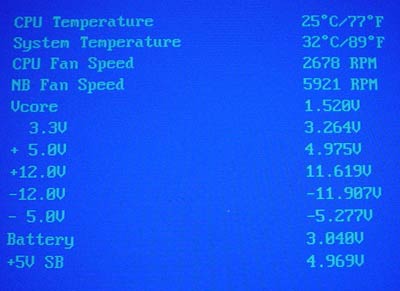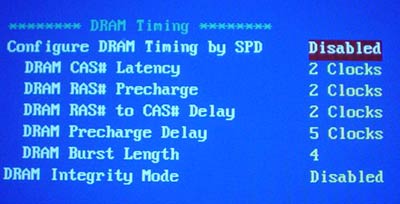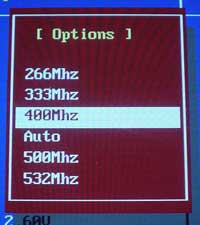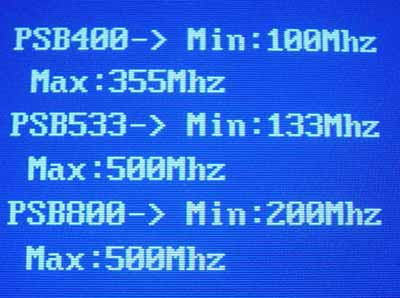MSI 875P Neo-FIS2R (875P): Our favorite thus far
by Evan Lieb on May 6, 2003 12:01 AM EST- Posted in
- Motherboards
MSI 875P Neo-FIS2R: BIOS and Overclocking
May 7th, 2003 Update: Before we go on we should mention a few BIOS issues we ran into that we have been unable to confirm until recent hours. These issues are well documented over the Internet by various users of MSI 875P Neo-FIS2R and MSI 875P Neo-LSR motherboards that ship with BIOS versions 1.1 and 1.2. These problems are two-fold (so far):
1. Overclocking via the BIOS using BIOS version 1.1 or 1.2 with MSI 875P motherboards is broken, you must use MSI's Windows CoreCell overclocking utility bundled with your motherboard.
And
2. High voltage and temperature variation.
The first issue does not seem to affect MSI 875P motherboards using BIOS version 1.0, which we used for this review during 800MHz FSB overclocking. The second issue seems to be related to MSI's new CoreCell technology. CoreCell is very aggressive with how it regulates voltages during idle and heavy loads, and apparently this is what has caused such large variance.
We are currently working with MSI to see if they can remedy these issues immediately, as this is not acceptable for enthusiasts that like to push their motherboard to the limit. We will report our findings in our 875P roundup later this month.
It's not surprising to see that MSI chose the AMI BIOS setup for the 875P Neo-FIS2R, as most of their motherboards are based on this type of BIOS.

The 875P Neo-FIS2R's PC Health section includes a good amount of pertinent info in regards to system activity. For example, some readings include CPU and System temperature, CPU and North Bridge fan speed, Vcore, battery voltage and then PSU readings (all rails). Unfortunately MSI did not include some sort of CPU fan speed control option in this section like other motherboard makers have been doing for quite some time. This is certainly a concern for users who are sensitive to PC components noise. Though we should mention that there is a nice Windows utility that allows fan speed adjustments in multiple intervals. We should also note that the temperature readings were quite erratic, which is a BIOS issue that MSI is working on.

In the DRAM timing section of the Advanced Chipset Features section there are options available for tweaking system performance such as CAS Latency, Precharge to Active, Active to Precharge, Active to CMD, and DRAM burst length. These type of DRAM timing options are common among motherboards based on Intel chipsets, and is really all that is necessary to leverage good memory performance (besides frequency control of course).
The Frequency/Voltage Control section holds a whole reservoir of performance and voltage tweaking options. These include CPU multiplier options (which you won't be able to use because there are no unlocked Pentium 4 processors publicly available on the open market), DRAM frequency, FSB frequency, AGP/PCI frequency, Vcore, VDIMM, and VAGP.
Using a 533MHz FSB processor your only options available are dual DDR266 and dual DDR333 mode. With an 800MHz FSB processor your memory frequency options add one other option: dual DDR400 support. These memory frequency options obviously aren't all that spectacular for users that demand wide frequency flexibility, but what's good to know is that overclockers won't be limited by too high a memory speed with a very high FSB, as there are options as low as DDR266 when a FSB value of 200MHz or more is saved to CMOS. In other words, you've got 3:2, 5:4 and 1:1 memory divider options to choose from.

Another feature that can be found in the 875P Neo-FIS2R's Frequency/Voltage Control section is FSB adjustments up to 500MHz in 1MHz increments. Of course, reaching 500MHz FSB (that's a 2GHz QDR FSB) won't be possible anytime in the near future, however hard you overclockers try. Still, it's nice to see that some motherboard makers are at least making sure that there is absolutely no chance that users in the future will need a BIOS update to allow for higher FSB speeds like with MSI's nForce2 series of motherboards.

The VDIMM adjustments in the 875P Neo-FIS2R's Frequency/Voltage Control section are the best we've seen from any Pentium 4 motherboard to date. VDIMM is adjustable as high as 3.30V, and not in just 0.1V increments but in 0.05V increments too (except between 3.00V and 3.10V). 3.30V is an extremely high memory voltage, and one that will certainly cause damage to your memory sooner rather than later. However, performance tweakers will rejoice over this high voltage, and will especially like the nice added bonus of being able to more finely tune VDIMM in 0.05V increments instead of the traditional 0.1V increments (which is definitely the more useful of the two features).
MSI goes all out again and adds a VAGP tweaking option available as high as 2.10V in 0.1V increments. This type of VAGP ceiling is way beyond the recommend (default) 1.5V-1.6V VAGP spec, but again, overvolters won't care and so will be more than pleased that they now have additional room to run their motherboard out of spec for maximum performance.
As if a maximum FSB of 500MHz, VDIMM of 3.30V and VAGP of 2.10V wasn't enough to convince you that the MSI 875P Neo-FIS2R is an overclocker's motherboard, add Vcore to the list; adjustments are available as high 1.95V in 0.05V increments after 1.60V and in 0.0125V increments before 1.60V. While there isn't the traditional 0.025V or 0.0125V Vcore increments available after 1.60V, 0.05V really isn't all that bad when you have the option of going as high as 1.95V. Vcore fluctuated between 1.46V-1.54V with a 1.50V processor. We did notice some very wide fluctuation changes though; that is, Vcore would occasionally dip to 1.42V, but would also rise as high as 1.58V; most of the time it was between 1.48V-1.52V. Still, this is an issue MSI needs to address in a future BIOS update as we're assuming that the motherboard doesn't actually have issues in supplying a clean voltage signal to the CPU (if the voltage did actually fluctuate that much we'd probably see instability during our FSB overclocking stress tests).
As always we see the handy AGP/PCI lock present in 875P Neo-FIS2R BIOS; in fact, it's adjustable up to a massive 151.01MHz/75.50MHz. This is yet another oveclocker-friendly feature that can be found in the Frequency/Voltage Control section of the 875P Neo-FIS2R BIOS.
All in all we are truly delighted (if not a bit surprised) to see this type of overclocker-friendly BIOS setup from MSI. MSI isn't particularly known for their overclocking motherboards, but we can say that has all changed with the 875P Neo-FIS2R, easily the most overclocker-friendly Pentium 4 motherboard (in terms of BIOS features) we've ever come across. As you're about to see, MSI's 875P Neo-FIS2R just didn't live up to the overclocker-friendly BIOS hype, as this board was hardly a slouch when it came to actual overclocking.










1 Comments
View All Comments
Anonymous User - Friday, August 15, 2003 - link
Hold your horses with this board... there are multiple BIOS errors at the moment and MSI are NOT keen to sort them out in a timely manner.Check out the MSI P4 boards (which are flooded with 875P error posts)
http://www.msi.com.tw/program/e_service/forum/boar...
Best of luck!